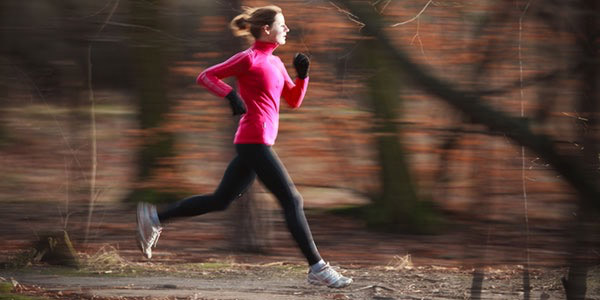Whether it’s a chilly morning walk or run or action-packed snow sports, getting moving in the cooler months poses some challenges. But winter is no excuse for exercise hibernation.
Winter is here and if you normally exercise outdoors, there’s a strong temptation to ditch your standard regime when the mercury plummets – and stay indoors and cosy up.
But to reap the health benefits of exercise – and there are plenty – you should try to do it regularly and that means avoiding a winter hibernation.
You do need to take special precautions when you’re active in the cold though. Here are some points to note:
Increase your warm-up time
Cold muscles, tendons and ligaments can lead to muscle sprains and joint strains following many winter activities says Brisbane physiotherapist and podiatrist Doug James. “In cooler weather, and particularly if you haven’t warmed up sufficiently, muscles and tendons may sustain damage from tearing caused by a lack of extensibility,” he says.
The Australian Institute of Sports recommends increasing your warm-up during cold weather. Warming up means doing some of the same exercises you’re planning, but at a lower intensity, so for example, a light jog is a good warm-up before a run. While you might normally stop your warm-up after five minutes, keep it up for about 10 minutes in winter. This will increase blood flow to muscles and improve the mobility of your joints. It also reduces sudden stress on your heart. In contrast, cooling down at the end of your workout helps stabilise your heart and blood pressure, James says. Some argue a cool down also helps prevent soreness but others disagree.
Dress for success
Exercising in the cold puts stress on your body, just as heat does. When it’s cold, your body can lose heat faster than it can produce it, and this can mean your body’s energy levels get used up. For example, a core body temperature drop of just 1ºC will cause muscle shivering which can then lead to a drop in blood sugar levels which will ultimately affect your performance. So, ensure you are wearing the right clothing when exercising.
Layers are good as you can easily remove them and put them back on as needed. Your base layer, closest to your skin, should be something which will draw sweat away from your body. Over that should go a mid layer for insulation and if it’s really cold, a shell layer to block wind or rain. Don’t forget your head and extremities get cold too.
Beware ‘weekend warrior’ syndrome
Have you become a ‘weekend warrior’ because it’s too dark to exercise outdoors before and after work in the winter months? Be warned that if you save up your exercise for the weekend, you essentially become a ‘once-a-week’ athlete meaning you are at greater risk of injuries, says James.
“Physical preparation remains key to reducing injury risk,” he says. “Too often, ‘weekend warrior’ athletes end up in emergency departments after sustaining injuries that could have been prevented through regular fitness training.” For those who play team sports, a regular strength and sport-specific fitness conditioning program in the lead up to the season is important.
Don’t disappear in the dark
Walkers, runners and cyclists should consider how easily they can be seen when out on the roads early or late in the day when it is still dark. Some kind of light and light-coloured appropriately warm clothing is a must to avoid collisions with vehicles or pedestrians. The same goes for diligent dog walkers who may find a light on their dog’s collar is a good investment.
Snow sport risks
If you’re heading to the snow, James advises physical preparation to specifically develop knee and hip strength. He also recommends having your equipment – like ski bindings – checked before you hit the slopes.
“If ski bindings fail during a fall, the result may involve ACL (knee ligament) ruptures and/or broken bones,” he warns.
Before heading to the snow, take a look at the Snowsafe Alpine Responsibility Code which is designed to prevent injury on Australian snowfields. It outlines a code of conduct to be maintained while skiing and provides a check list of safe practices regarding clothing, equipment, food and children in the snow.
Fractured legs or twisted knees are the ice and snow sport injuries most likely to result in hospitalisation, The Australian Institue of Health and Welfare says.
Drink up
Make sure you stay hydrated in cooler weather – but don’t be tempted to turn to alcohol to do the job. Rather than warm the cockles of your heart, alcohol will impair coordination and your ability to regulate your temperature, which could lead to an injury. Caffeine drinks can also cause dehydration.
Source: by Jennifer King






Leave A Comment